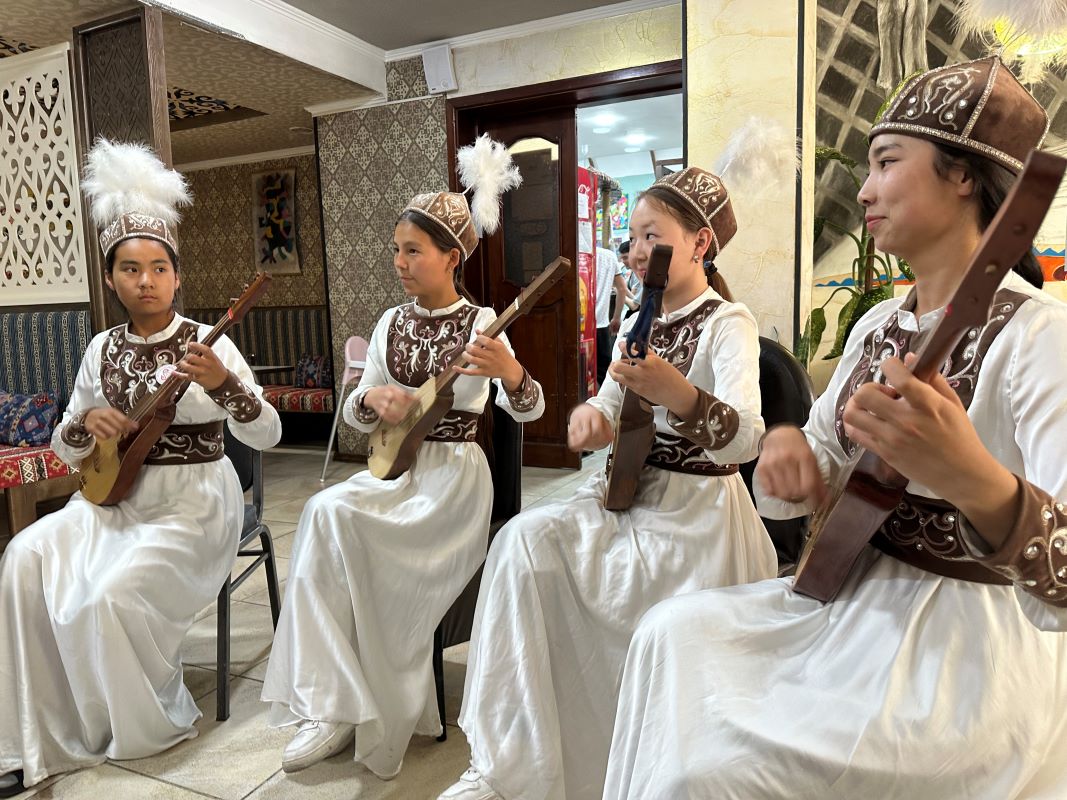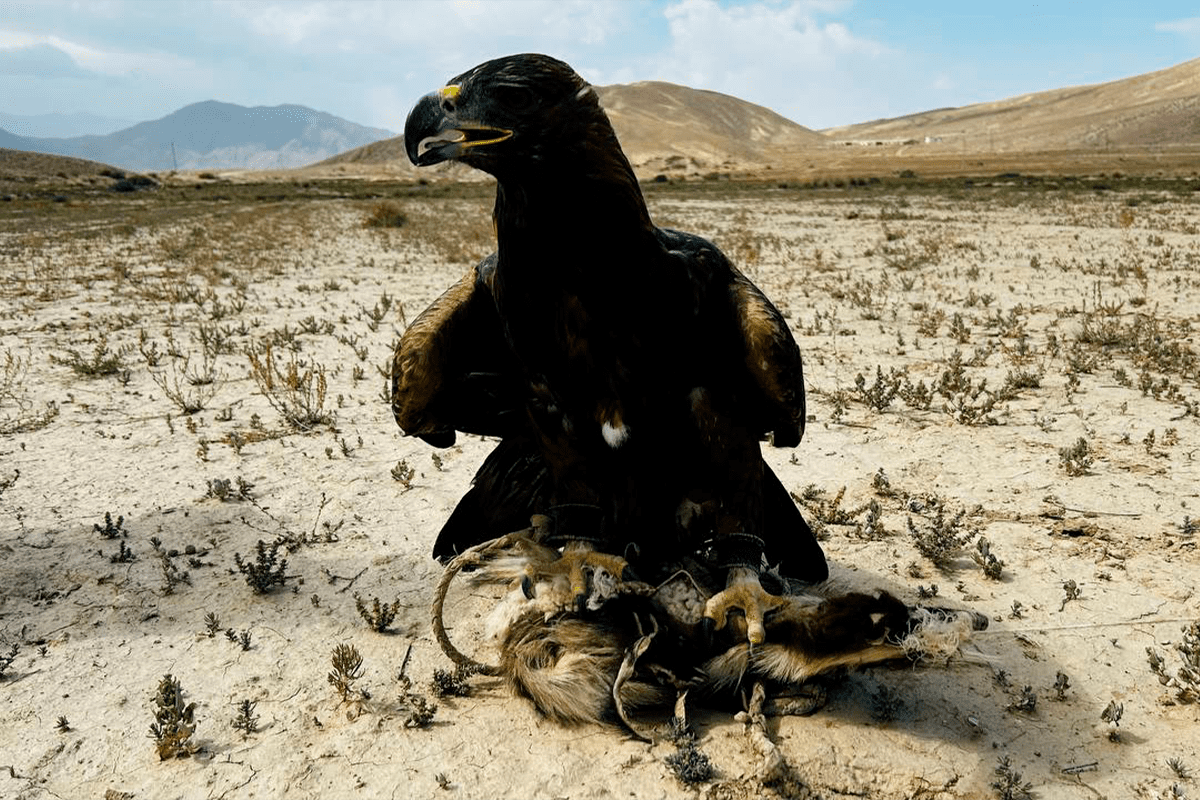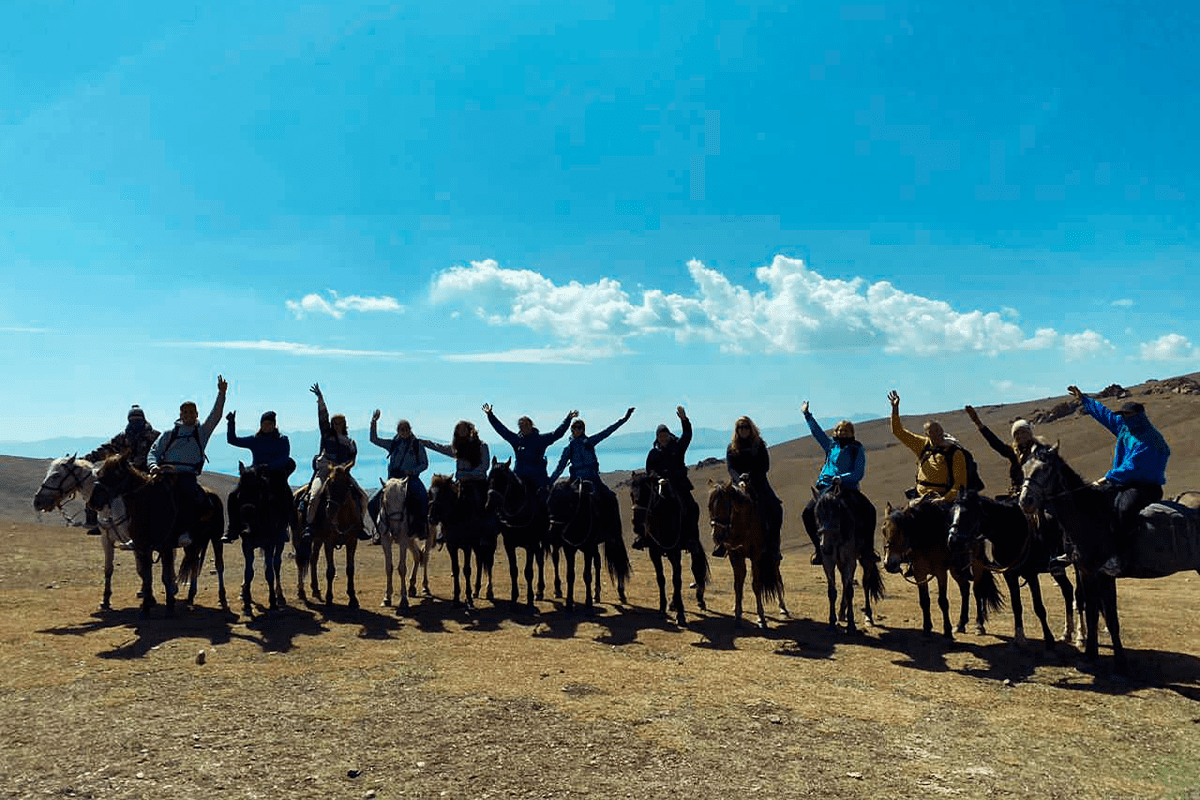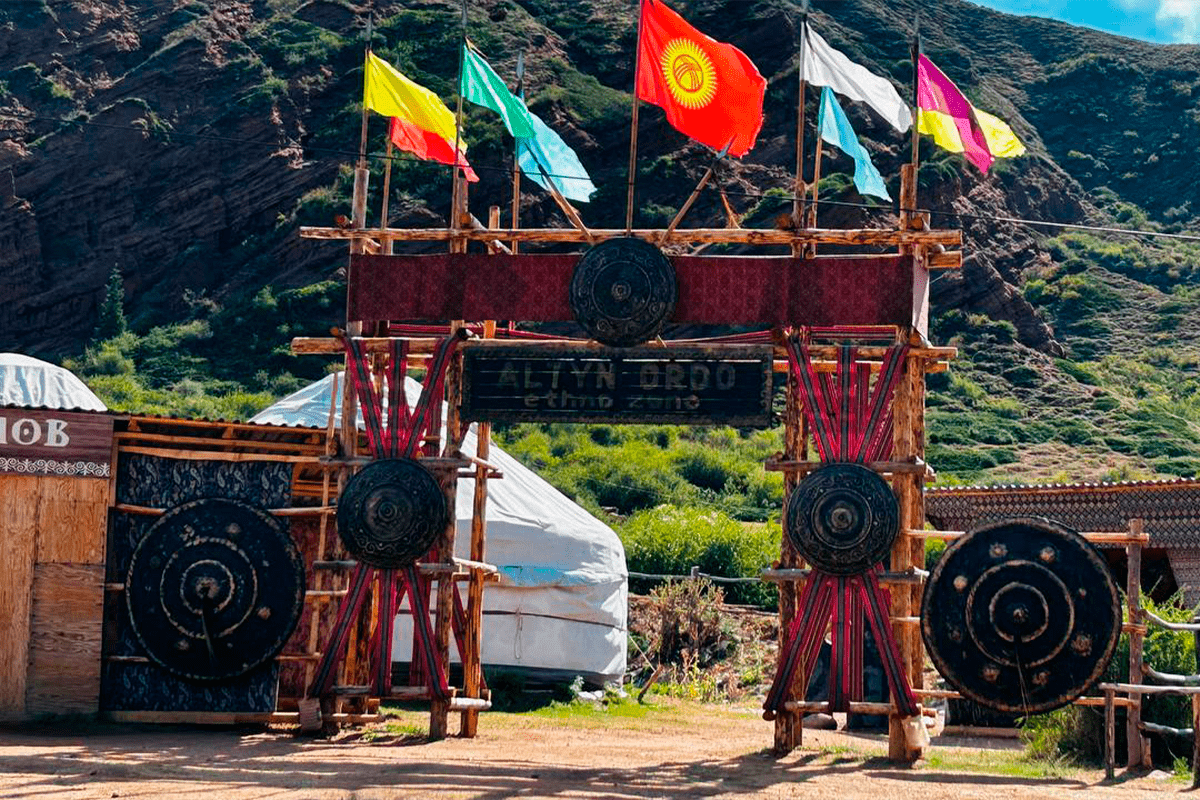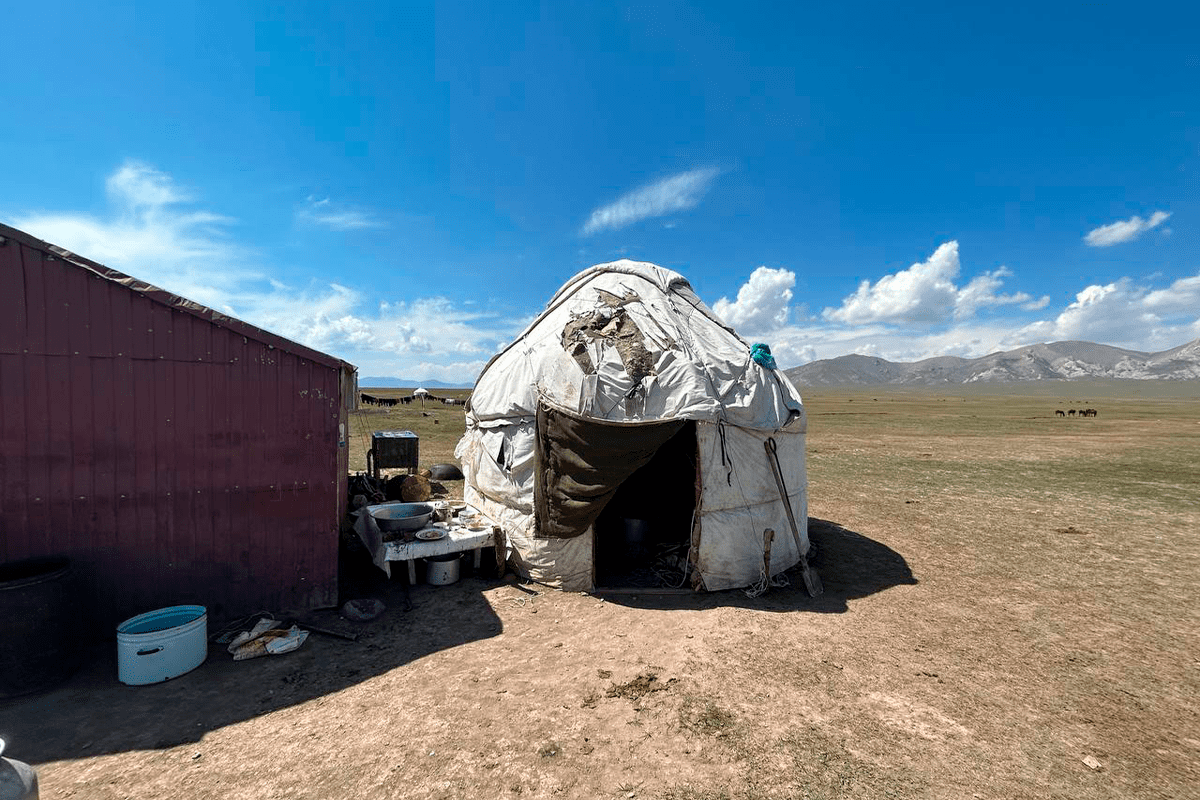The birth of a child. Traditions of Kyrgyzstan. Kyrgyz traditions of childbirth provided for a very respectful attitude to the expectant mother and child.
Long before giving birth, the expectant mother was carefully protected. During the period of Kyrgyz nomadism, cases of infant deaths were not uncommon, so expectant mothers sought protection from evil forces with the help of a special talisman “tumar”.
Childbirth.
Childbirth always took place in the women’s half of the yurt, where bonfires were lit day and night to scare away evil spirits. When childbirth was approaching, men and children left the house, and the main role was assigned to the midwife “Kindik Ene”.
If the woman in labor was not strong enough, her husband was called. The husband hugged his wife from behind and began to put pressure on her stomach from top to bottom.
The Kyrgyz believed that difficult childbirth was caused by the displeasure of the goddess Umai (the patron goddess of childbirth and babies) and the intervention of the evil spirit Albarsta, who, according to legend, devours babies.
After giving birth, the midwife poured oil on the fire and thanked the goddess Umai.
Postpartum rituals and customs
In Kyrgyzstan, the joyful news of the birth of a child, called “suyunchu”, was passed on to all relatives and neighbors. In response to this news, gifts were given. And the one who wanted to see the child first had to pay “corunduk”.
In accordance with Kyrgyz traditions associated with the birth of a child, before giving him a name, a thorough examination was carried out beforehand and some characteristic features were noted. Then the groom’s parents or the respected aksakar pronounced the name of the newborn.
The Kyrgyz believed that names have great power that determines fate. For example, calling a child by the name “Umut” (hope) or “Salamat” (health), they tried to “program” a happy future.
Women were forbidden by custom to give names to their children.
Prohibitions against infants
Prohibition 1: it was forbidden to kiss the heel so that the child would not become lazy and capricious.
Prohibition 2: It was forbidden to name the exact age of the month in order to protect it from the evil eye and damage.
Prohibition 3: It was forbidden to call children by name after sunset. It was believed that the evil spirit of “Albarsta” could hear it.
Prohibition 4: It was forbidden to tickle newborn babies.
Prohibition 5: The Kyrgyz believed that evil spirits could touch a child’s clothes at night, so the clothes were always carefully cleaned.
Prohibition 6: To prevent bad looks and spoilage, children were not given much love and affection.
It was also considered bad form to weigh children, measure their height, or tell them they were beautiful.
Beshik (cradle).
Exactly 40 days after the birth of the child, he was put in a cradle called “beshik”. Traditionally, it was done by elderly women to pray to the goddess Umai for a long life and the health of the newborn.
According to Kyrgyz tradition, before putting a child in a beshik, he was washed with 40 tablespoons of warm water “kyrk kashik suuga kirintuu”, the first hair was cut “kalyn chak” and the first shirt “it koinok” (dog shirt) was removed. This shirt was so named because it was first put on a dog. This was done so that all the sadness and evil eye directed at the newborn would be transferred to the animal.
In addition, the baby was given a new shirt – Kyrk Koynok. This shirt was sewn from 40 scraps, pre-assembled in neighboring large and old families, so that the newborn would live a long life.
On this day, another Kyrgyz custom was also celebrated – the ritual of baking and treating 40 children with 40 oiled tortillas “my tokoch” or pancakes “kyrk chelpek”.
The first steps and tushoo kesuu (cutting the rope)
“Tushoo kesuu” is an ancient Kyrgyz family tradition that is still observed today.
This ceremony is held when a child turns one and takes his first steps. Tushoo kesuu” starts in the morning. The child is placed near the yurt and his legs are tied with a rope made of sheep’s wool (two twisted threads – white and black – a symbol of good and evil). Then, from the other side, children aged 8-12 years run up to the child. Whoever gets there first and cuts the noose gets a magnificent gift and a knife prepared for this ritual. At the request of the guests and participants, this race is repeated several times.
Kyrgyz believe that observing this ritual will help the child to stand on his feet confidently and make his future life happy and joyful.
Sunnot Toy (a holiday dedicated to the circumcision of boys).
Traditionally, the Kyrgyz hold a ceremony called Sunnot Toi. Circumcision is most often performed at the age of 3-5-7 years (it is very important that the number is odd).
Sunnot Toy is a great holiday for the whole family. On this day, a sheep is slaughtered, a table is set and guests are invited.
Previously, this ritual was carried out only by mullahs. Today, most parents prefer to go to medical institutions.
Kyrgyz fertility rituals.
If the Kyrgyz remained childless for a long time, they stole clothes from mothers with many children and dressed them themselves.
When childless women went to celebrate the birth of a child, they were specifically insulted. It was believed that the more offended they were, the sooner the long-awaited pregnancy would come.
If a woman remained childless for a long time, her husband changed his place of residence.
Infertile women ate up after mothers with many children or ate turtle eggs.
They walked around the pots in which smarok was cooked (a spring festive dish of Turkic and Iranian nationalities, made from sprouted wheat grains),
Interesting facts. On the first day after giving birth, the woman was given boiled milk to drink, on the second and third – tea and porridge, on the fourth – the husband cut a ram and fed his wife a dinner of meat, which was called “kalzha”, on the fourth day the woman was given milk and porridge, on the fifth – milk and porridge, on the fifth – porridge and milk.
The belief that evil spirits could be deceived and children protected was so strong that the Kyrgyz performed rituals of “imaginary theft” and temporarily left children with strangers who were found before giving birth.
In homes where a boy died early, rituals included dressing the newborn in girl’s clothes, giving him a female name and braiding pigtails.
If only a girl was born, then the last child was specifically named that way, and the family hoped that the next child would be a boy. Girls were called, for example, “Uul bolsun” (let a son be born).
Today, the traditions associated with childbirth in Kyrgyzstan retain their originality and brightness, although some of them have been simplified or completely lost.

